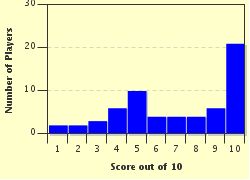Quiz Answer Key and Fun Facts
1. October 1st is the name day of Saint Therese of Lisieux and of Saint Remigius. The latter was Bishop of Reims from 459 until 530. Which famous King of the Franks was baptised by Remigius?
2. October 5th is the name day of Saint Faustina Kowalska. Where was she born?
3. Time for a canonized Roman Catholic Pope. Which Pope is celebrated on October 7th? His name reminds us of an Italian touristic city.
4. Saint Pelagia (sometimes also called St. Margaret) lived before 600 AD. She is venerated on October 8th. What was probably her profession?
5. October 10th is the name day of a certain Francis from an infamous family. What is the family name of this Saint Francis?
6. October 16th is the name day of Saint Gerard Majella, a priest who was favoured with several talents: prophecy and bilocation, to name only a few. To which religious order did Saint Gerard Majella belong?
7. October 19th is the name day of Saint Laura. This nun and abbess from Cordoba (Spain) was martyred in 864. Who was responsible for Laura's martyrdom?
8. October 21st is the feast day of a female martyr whose suffering inspired the painter Hans Memling to a beautiful shrine. Who was this saint executed in Cologne by the Huns?
9. October 23rd is the name day of one of the Vietnamese martyrs. What is his name?
10. Although he never was officially canonized, the King of Wessex bearing the moniker "The Great" is listed in the Calendar of Saints (on October 26th). What is his first name?
Source: Author
JanIQ
This quiz was reviewed by FunTrivia editor
LeoDaVinci before going online.
Any errors found in FunTrivia content are routinely corrected through our feedback system.


